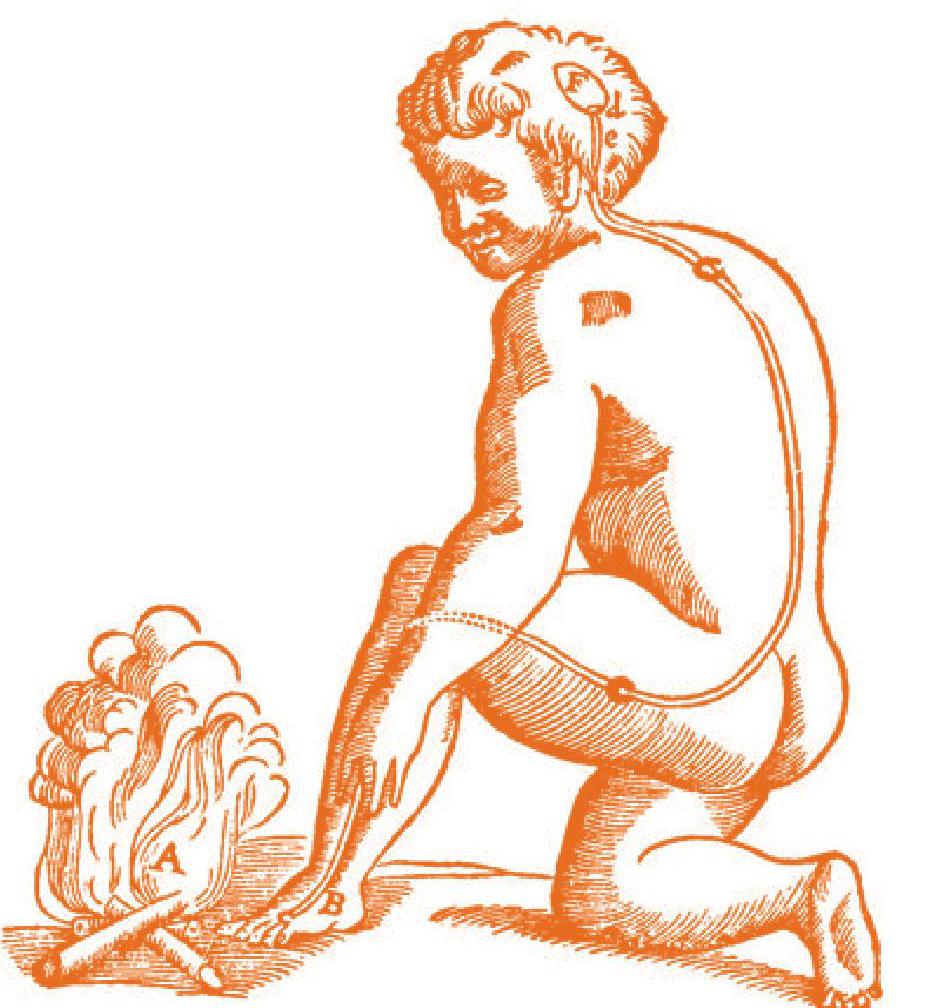
A reflex is an automatic response to a stimulus. Examples include blinking, gagging and withdrawing from a painful stimulus. Reflexes have specific functions. Many are there to protect the body from danger or damage — the gag reflex, for example, prevents choking. Some reflex responses involve movement of part of the body, but responses may also include changes in blood pressure, gut movement, heartbeat and breathing. Reflexes are generally considered to be innate and involuntary — they happen without conscious thought and we have no control over them. However, as we shall see, we can exert control over some of our reflexes, and others can be conditioned or trained.
The French philosopher René Descartes, in the mid- 1600s, was the first person to try to explain the nature of reflexes. Figure 1 is a famous picture from his book Treatise of Man, which shows a boy withdrawing his foot from a fire. Descarte’s explanation of how the reflex occurred was completely incorrect but he saw the link between sensing the heat of the fire and the response — rapid withdrawal. This was quite insightful since at that time almost nothing was known about how muscles and nerves worked.
Your organisation does not have access to this article.
Sign up today to give your students the edge they need to achieve their best grades with subject expertise
Subscribe




